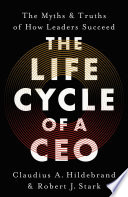

The book delves into the changing nature of leadership styles as CEOs progress through different stages of their careers. Initially, many leaders adopt a directive style, focusing on making decisions and providing clear guidance. However, as they gain experience, they often shift towards a more collaborative approach, valuing input from their teams and fostering a culture of inclusivity. This evolution is crucial as it reflects the dynamic nature of business environments where adaptability is vital. The narrative emphasizes that effective CEOs must recognize when to switch styles based on organizational needs, market conditions, and team dynamics. This adaptability not only enhances their leadership effectiveness but also contributes to team morale and productivity. The book illustrates this concept with case studies of successful CEOs who have navigated these transitions, showcasing how their evolving leadership styles have influenced their companies' trajectories.
Continue readingStrategic decision-making is a cornerstone of a CEO's role, and the book provides a comprehensive overview of how effective leaders approach this critical task. It highlights the importance of data-driven decision-making, emphasizing the need for CEOs to leverage analytics and market research to inform their strategies. The narrative discusses various frameworks and models that can aid in the decision-making process, such as SWOT analysis and scenario planning. Additionally, the book addresses the psychological aspects of decision-making, including cognitive biases that can cloud judgment. By sharing anecdotes from prominent CEOs, the author illustrates how strategic decisions can have far-reaching implications for a company's success or failure. The emphasis on continuous learning and adaptation in decision-making processes is a recurring theme, underscoring the necessity for CEOs to remain vigilant and responsive to changing market dynamics.
Continue readingA strong company culture is essential for long-term success, and the book stresses the CEO's role in cultivating this environment. It discusses how a positive culture can drive employee engagement, enhance collaboration, and ultimately lead to better business outcomes. The author outlines practical steps for CEOs to build and maintain a thriving culture, including establishing clear values, promoting open communication, and recognizing employee contributions. The book also explores the challenges that can arise, such as cultural misalignment during mergers and acquisitions. Through real-world examples, it illustrates how CEOs who prioritize culture can create resilient organizations that withstand challenges and foster innovation. The narrative encourages leaders to view culture as a strategic asset rather than just a byproduct of operations.
Continue readingCEOs are often at the forefront of navigating crises, and the book provides insights into effective crisis management strategies. It discusses the importance of preparedness, emphasizing that proactive planning and scenario analysis can mitigate risks. The narrative highlights the need for clear communication during crises, both internally and externally, to maintain trust and transparency. The book shares case studies of CEOs who successfully navigated crises, showcasing their decision-making processes and the lessons learned. It also addresses the emotional toll crises can take on leaders and their teams, advocating for the importance of resilience and support systems. This section serves as a valuable resource for current and aspiring CEOs, equipping them with the tools to handle unexpected challenges with confidence.
Continue readingNetworking is a vital component of a CEO's career, and the book emphasizes the significance of building and maintaining relationships within and outside the industry. It discusses various networking strategies, such as attending industry conferences, participating in executive forums, and leveraging social media platforms. The author underscores the value of mentorship and peer support, illustrating how successful CEOs often attribute their growth to the connections they've made throughout their careers. The narrative also addresses the balance between personal and professional networking, encouraging leaders to cultivate genuine relationships that extend beyond transactional interactions. By showcasing examples of CEOs who have effectively utilized their networks, the book highlights how strategic networking can lead to new opportunities, partnerships, and insights that drive business success.
Continue readingIn today’s fast-paced business landscape, continuous learning is essential for CEOs. The book emphasizes that effective leaders must commit to lifelong learning, whether through formal education, self-study, or experiential learning. It discusses the importance of staying abreast of industry trends, technological advancements, and evolving consumer behaviors. The narrative encourages CEOs to foster a culture of learning within their organizations, where team members are empowered to develop their skills and share knowledge. By highlighting case studies of CEOs who have embraced learning and adaptation, the book illustrates how this mindset can lead to innovation and competitive advantage. The author also addresses the challenges leaders face in prioritizing learning amidst their busy schedules, offering practical tips for integrating learning into daily routines.
Continue readingSuccession planning is a critical aspect of a CEO's responsibilities, and the book provides a thorough examination of its importance. It discusses how effective succession planning ensures organizational stability and continuity, particularly during leadership transitions. The author outlines best practices for identifying and developing potential successors, emphasizing the need for a structured approach that includes mentoring, training, and performance evaluations. The narrative also explores the emotional aspects of succession, addressing the challenges leaders may face in letting go and trusting others to take the reins. Through real-life examples, the book illustrates how proactive succession planning can safeguard a company’s future and maintain its legacy. This section serves as a vital resource for CEOs looking to create a sustainable leadership pipeline within their organizations.
Continue reading